We ship internationally! From Chile, South America
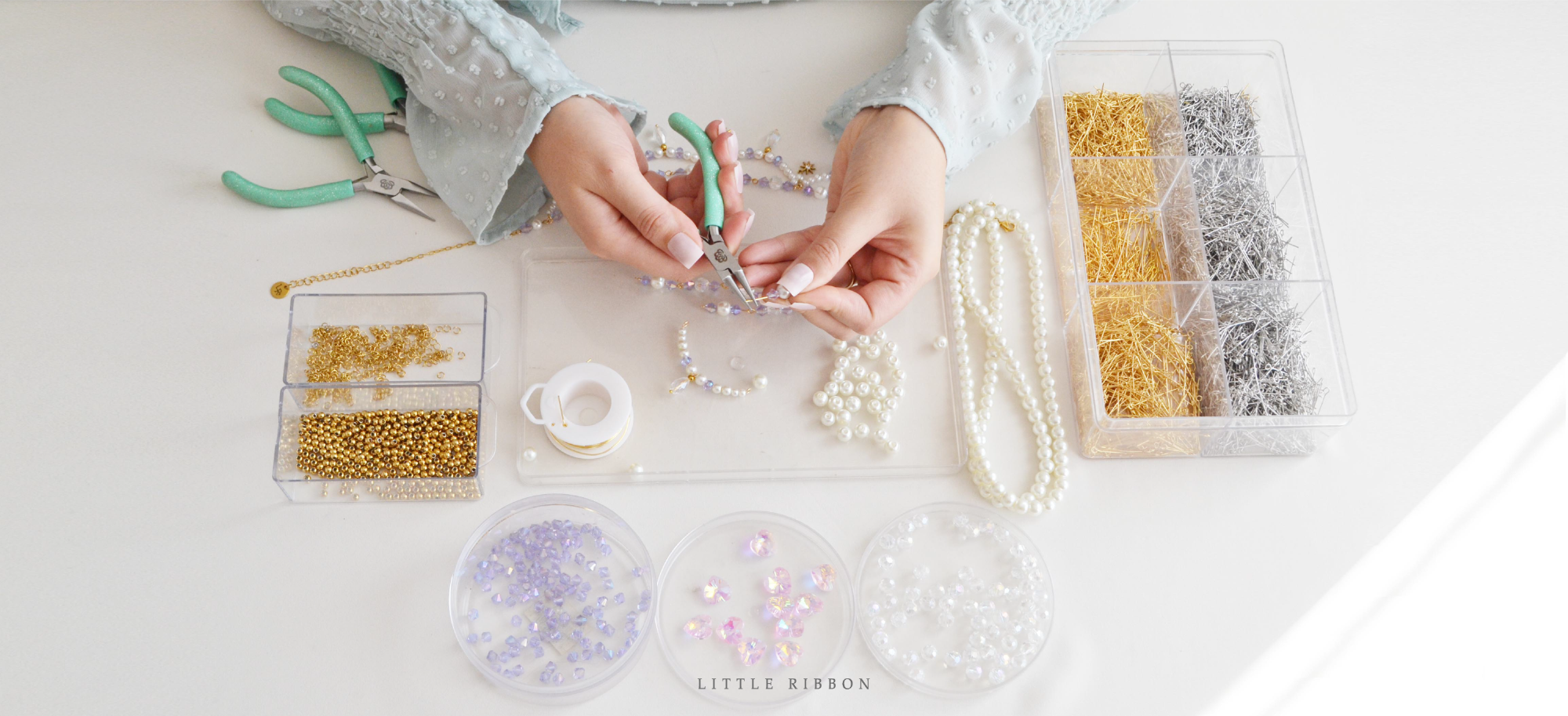
JEWELRY CARE
Your item was made with love, so please read the instructions carefully to learn how to care for and store your quality jewelry:
✦ Jewelry should only be put on after applying any make-up, hair spray, gels, body lotions, perfume or other chemicals (the alcohol and acids will cause permanent damage)
✦ Keep it away from water. Please remove when bathing, showering or swimming
✦ Store your jewelry pieces in a cool and dry place
✦ Avoid wearing jewelry when doing physical activities. And remove your pieces before going to bed
✦ Clean the pieces occasionally after each use. Wipe them with a soft cloth
✦ Please be gentle with your accessories. Due to their glass composition, be mindful and protect your jewelry from impact against hard surfaces


ABOUT LITTLE RIBBON'S DESIGN PIECES
Our quality jewels are put together by hand, and as a result there can sometimes be slight differences in color, size, and finishing of the materials or embellishments—all part of the charm of handmade products!. Because of its special properties, the foundation of all our jewelry (the part of the jewelry that contains the most material) is handcrafted with gold or silver-plated wire or gold or silver stainless steel pins. These two types of material are resistant to oxidation and corrosion, hypoallergenic, strong, and long-lasting, making the jewelry ideal for any occasion.
All our jewels are lead-free, cadmium-free, and nickel-free. Our quality jewelry is handmade with glass beads, reconstituted stones or semiprecious stones. But sometimes, due to the heavy weight of the glass, these crystals, beads, and stones are counterweighted with acrylic beads. Beads and stones sometimes do not come from the same manufacturer, so they do not have exactly the same measurements or color. There may be a slight differences between releases.
With use and time, all materials have a tendency to tarnish. Even silver can turn black or yellow. In consequence, we have selected materials with the best durability. Following our jewelry care best practices will help to ensure that your Little Ribbon jewelry maintained in good condition over time.
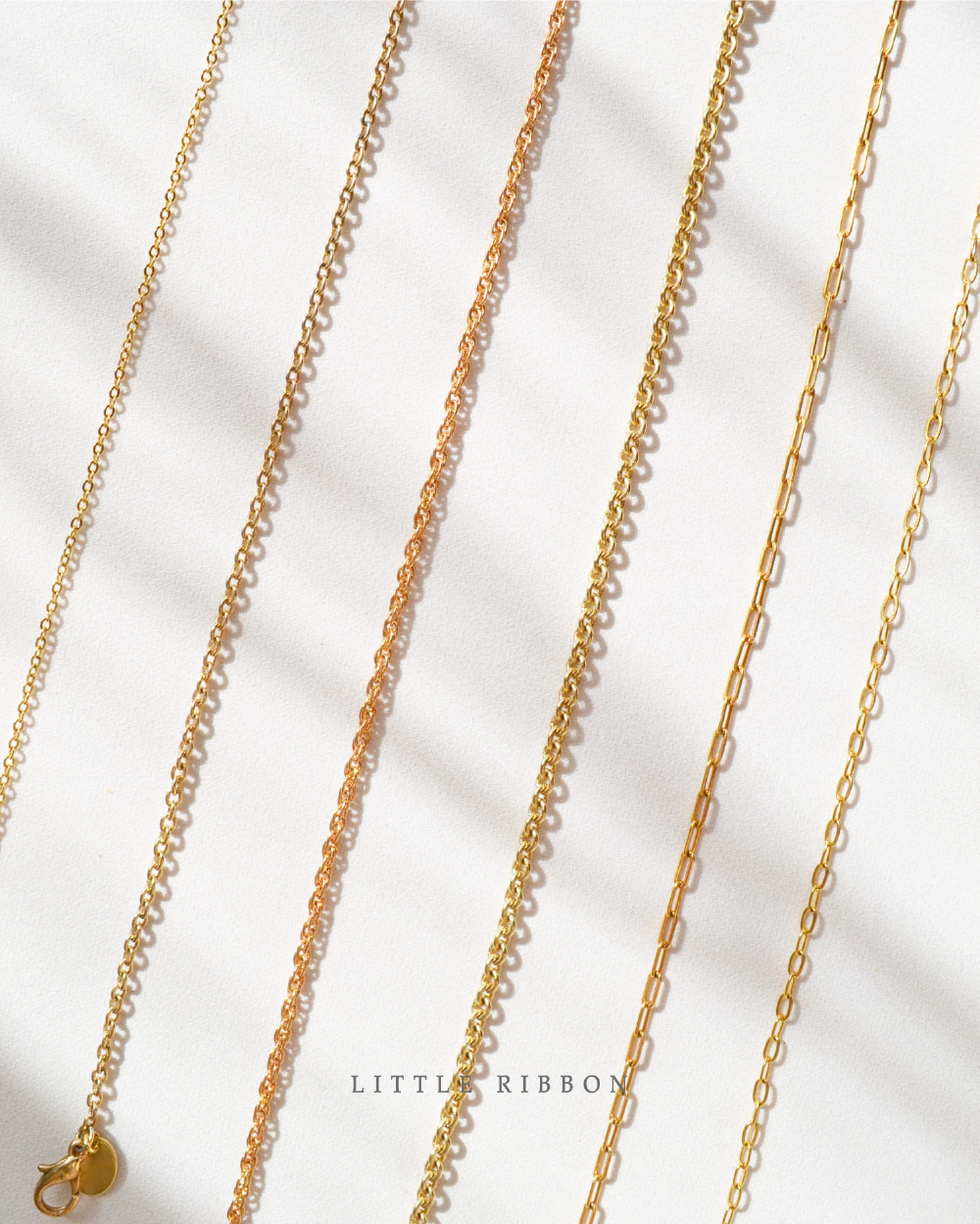
WHAT KIND OF MATERIAL IS MY QUALITY JEWELRY?
✦ Sterling Silver or 925 Silver
✦ Gold Vermeil
✦ Stainless Steel
✦ Rhodium
✦ Pewter
✦ Gold-filled
✦ Silver-plated
✦ Gold-plated
✦ Use of Glass Beads
✦ Use of Reconstituted Beads
✦ Use of Cubic Zirconia Crystals
✦ Use of Semiprecious Stones
MATERIALS FAQS
This is a term applied to stones created by combining small chips, powder, and ground-up low-grade stones, then binding or fusing them with a plastic resin (epoxy), and compressing them into blocks. The blocks are then divided into beads, cabochons, and slabs. In some cases, the reconstituted stone is derived from “real” stones.
“Semiprecious stones are stones such as turquoises and amethysts that are used in jewelry but are less valuable than precious stones such as diamonds and rubies” (Collins dictionary). The term “semi-precious stones” does not mean that they are less beautiful than precious stones. The best known of these are amethyst, topaz, peridot, citrine, aquamarine or green tourmaline.
As the most popular variant of silver, it is composed of 92.5% pure silver and 7.5% other metals. Copper is commonly used in this composition because it improves the alloy’s hardness. Sterling silver is used in jewelry because it is a more durable and practical option than pure silver.
Sterling silver is one of the greatest options for precious metals in terms of price and durability.
What’s the lifespan of Sterling Silver?
Sterling silver is quite strong. Sterling silver jewelry, with proper care, can last a lifetime.
Over time silver naturally tarnishes or turns black, but it can also be easily cleaned or polished. When silver is exposed to sulfur-containing gases in the air, it discolors and darkens as it reacts with the gas, forming a tarnish layer on the surface.
**Do not use liquid silver cleaner on sterling silver jewelry that contains zirconia or other gemstones. It will damage the stones permanently**
**Please consider that sterling silver can sometimes leave green or black marks on your skin because of your body’s pH. This does not imply that the jewelry is of low quality. It’s unusual, but it happens when the copper in the silver reacts with your skin’s natural acids**
Gold vermeil is a base piece made of sterling silver that has a gold layer plating. The plating is thicker than regular gold plating, so it will last longer before wearing down to the sterling silver core. Because of its sterling silver base, this is the most hypoallergenic option for plated jewelry.
What’s the lifespan of gold vermeil?
Gold vermeil is more durable than other gold-plated options, lasting for years with proper care. Even so, as with any plated jewelry, the plating will wear over time.
For tips on how to preserve its beautiful color, please check out our jewelry care instructions.
Please consider that after some years of use, plated jewelry may need to be re-plated.
Stainless steel is an alloy of iron, carbon, and chromium. Steel is classified, and there are a few types.
Stainless steel stands out in jewelry as a high-quality material due to its hardness and durability. It resists oxidation and corrosion and is hypoallergenic, making it ideal for sensitive or reactive skin. Stainless steel can be found in its natural color, dark silver, or gold, which is obtained through plating. Steel is slightly darker than other metals.
Although stainless steel is one of the best materials for jewelry, its only disadvantage is that it scratches more easily than other metals.
What’s the lifespan of Stainless steel?
Silver or natural stainless steel is a strong and durable material that, with proper care, can last a lifetime. Gold-plated stainless steel, on the other hand, is more delicate and can tarnish due to rubbing or friction. A common example is the use of gold-plated earrings. Using metal earring backs scratches the earring posts, causing them to lose their gold color. Silicone earring backs are recommended in this case.
Also, as explained previously, the main disadvantage of this material is that it scratches much easier than the other materials mentioned. Giving your stainless steel jewelry the right care is essential if you want the gold plating to last longer.
Pewter is the fourth most popular metal used in jewelry, behind gold, silver, and platinum. Is a malleable metal alloy. It is traditionally composed of 70–99% tin, mixed with copper and other metals. All of our pewter is completely lead-free, making it hypoallergenic, and comes from highly reputable suppliers in Western countries. Our supplier provides golden pewter findings that contain 10 microns of 18K gold. And 50 microns of Silver 925 for silver-plated pewter findings.
What’s the lifespan of Pewter?
Pewter is considered a soft yet durable metal. If properly cared for, pewter can last for many years. Even so, you should be aware that under certain conditions, pewter will oxidize and darken. Please see our jewelry care instructions for tips on how to maintain its beautiful color.
Gold-filled jewelry is made by wrapping layers of solid gold sheets around a base metal, typically brass. It is much less expensive than solid gold and is created by bonding a layer of gold to a base metal to give it the appearance of gold.
What’s the lifespan of Gold-filled?
Gold filled jewelry lasts longer and is more durable than other types of jewelry. Even so, Even so, they still need to be properly maintained.
A gold-filled piece is usually more durable than a gold-plated piece, but not as long as solid gold.
Rhodium plating is the process of applying a thin layer of rhodium over another affordable metal, such as copper. Rhodium is a platinum-group metal that is typically used in alloys to harden other metals. Rhodium plating, also known as dipping or flashing, creates a durable, scratch-resistant, and shiny piece of jewelry. Another benefit of rhodium plating is that it is nickel-free, making it hypoallergenic.
What’s the lifespan of Rhodium plating?
Rhodium plating can last for years, depending on how often they are worn. It’s worn down by friction. For tips on how to preserve its beautiful color, please check out our jewelry care instructions.
Please consider that after some years of use, plated jewelry may need to be re-plated.
Silver-plated jewelry is made out of different base metals, such as brass or copper, and then coated with silver particles, resulting in a thin outer layer of silver. Silver-plated jewelry usually contains 5% or less pure silver.
What’s the lifespan of Silver-plating?
For pieces you intend to wear only occasionally, silver-plated jewelry may be acceptable. However, sterling silver is far more strong and durable if you are investing in a long-lasting piece.
Please consider that after some years of use, plated jewelry may need to be re-plated.
Gold plated jewelry consists of a very thin layer of gold – 0.05% actual gold or less – applied to a base metal, typically brass or copper. Not all gold-plated jewelry is equal; variations in thickness and base material can have a significant impact on quality.
What’s the lifespan of Gold-plating?
Gold plating in general is delicate; the main drawback of gold plating is that the gold layer fades and tarnishes over time. To make sure that the gold plating lasts longer, it is recommended that you care for and store your jewelry pieces properly. For tips on how to preserve its beautiful color, please check out our jewelry care instructions.
Please consider that after some years of use, plated jewelry may need to be re-plated.
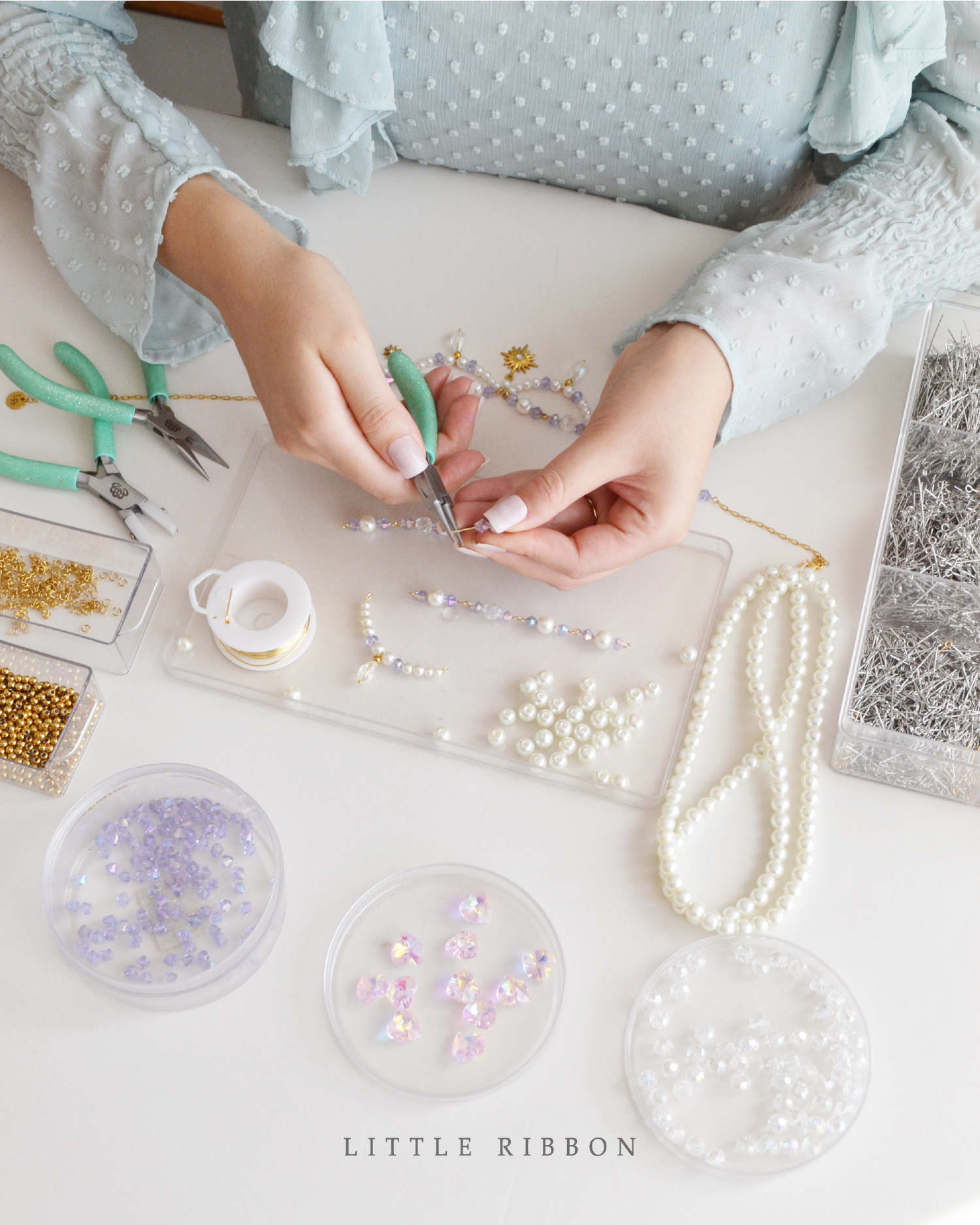
JEWELRY CARE
Your item was made with love, so please read the instructions carefully to learn how to care for and store your quality jewelry:
✦ Jewelry should only be put on after applying any make-up, hair spray, gels, body lotions, perfume or other chemicals (the alcohol and acids will cause permanent damage)
✦ Keep it away from water. Please remove when bathing, showering or swimming
✦ Store your jewelry pieces in a cool and dry place
✦ Avoid wearing jewelry when doing physical activities. And remove your pieces before going to bed
✦ Clean the pieces occasionally after each use. Wipe them with a soft cloth
✦ Please be gentle with your accessories. Due to their glass composition, be mindful and protect your jewelry from impact against hard surfaces
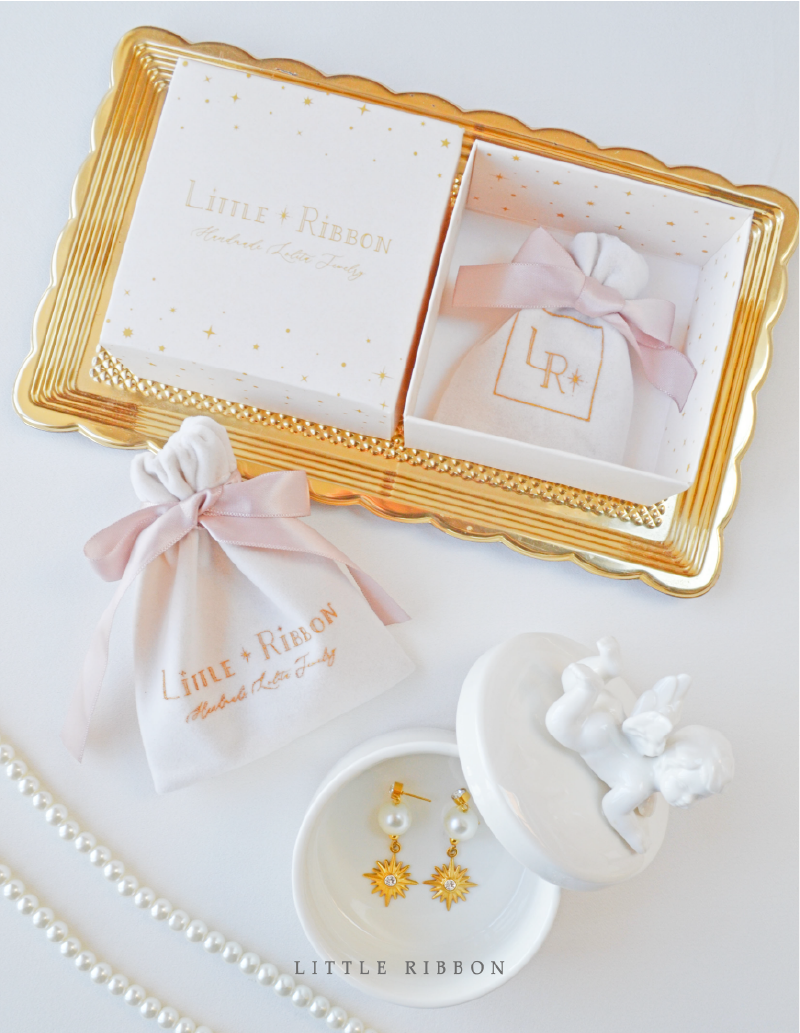
ABOUT LITTLE RIBBON’S DESIGN PIECES
Our quality jewels are put together by hand, and as a result there can sometimes be slight differences in color, size, and finishing of the materials or embellishments—all part of the charm of handmade products!. Because of its special properties, the foundation of all our jewelry (the part of the jewelry that contains the most material) is handcrafted with gold or silver-plated wire or gold or silver stainless steel pins. These two types of material are resistant to oxidation and corrosion, hypoallergenic, strong, and long-lasting, making the jewelry ideal for any occasion.
All our jewels are lead-free, cadmium-free, and nickel-free. Our quality jewelry is handmade with glass beads, reconstituted stones or semiprecious stones. But sometimes, due to the heavy weight of the glass, these crystals, beads, and stones are counterweighted with acrylic beads. Beads and stones sometimes do not come from the same manufacturer, so they do not have exactly the same measurements or color. There may be a slight differences between releases.
With use and time, all materials have a tendency to tarnish. Even silver can turn black or yellow. In consequence, we have selected materials with the best durability.
Following our fine jewelry care best practices will help to ensure that your Little Ribbon jewelry maintained in good condition over time.
WHAT KIND OF MATERIAL IS MY QUALITY JEWELRY?
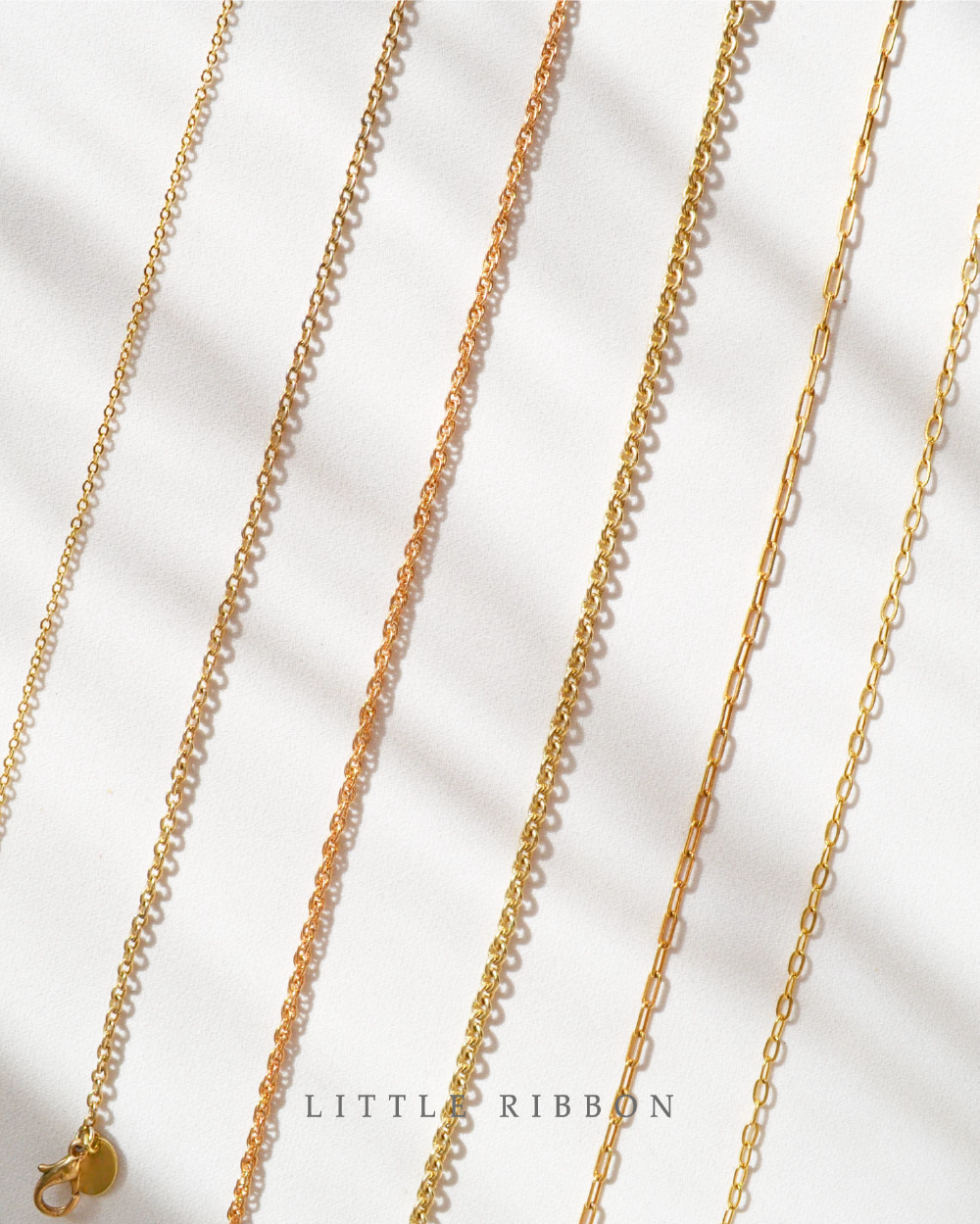
✦ Sterling Silver or 925 Silver
✦ Gold Vermeil
✦ Stainless Steel
✦ Rhodium
✦ Pewter
✦ Gold-filled
✦ Silver-plated
✦ Gold-plated
✦ Use of Glass Beads
✦ Use of Reconstituted Beads
✦ Use of Cubic Zirconia Crystals
✦ Use of Semiprecious Stones
MATERIALS FAQS
This is a term applied to stones created by combining small chips, powder, and ground-up low-grade stones, then binding or fusing them with a plastic resin (epoxy), and compressing them into blocks. The blocks are then divided into beads, cabochons, and slabs. In some cases, the reconstituted stone is derived from “real” stones.
“Semiprecious stones are stones such as turquoises and amethysts that are used in jewelry but are less valuable than precious stones such as diamonds and rubies” (Collins dictionary). The term “semi-precious stones” does not mean that they are less beautiful than precious stones. The best known of these are amethyst, topaz, peridot, citrine, aquamarine or green tourmaline.
As the most popular variant of silver, it is composed of 92.5% pure silver and 7.5% other metals. Copper is commonly used in this composition because it improves the alloy’s hardness. Sterling silver is used in jewelry because it is a more durable and practical option than pure silver.
Sterling silver is one of the greatest options for precious metals in terms of price and durability.
What’s the lifespan of Sterling Silver?
Sterling silver is quite strong. Sterling silver jewelry, with proper care, can last a lifetime.
Over time silver naturally tarnishes or turns black, but it can also be easily cleaned or polished. When silver is exposed to sulfur-containing gases in the air, it discolors and darkens as it reacts with the gas, forming a tarnish layer on the surface.
**Do not use liquid silver cleaner on sterling silver jewelry that contains zirconia or other gemstones. It will damage the stones permanently**
**Please consider that sterling silver can sometimes leave green or black marks on your skin because of your body’s pH. This does not imply that the jewelry is of low quality. It’s unusual, but it happens when the copper in the silver reacts with your skin’s natural acids**
Gold vermeil is a base piece made of sterling silver that has a gold layer plating. The plating is thicker than regular gold plating, so it will last longer before wearing down to the sterling silver core. Because of its sterling silver base, this is the most hypoallergenic option for plated jewelry.
What’s the lifespan of gold vermeil?
Gold vermeil is more durable than other gold-plated options, lasting for years with proper care. Even so, as with any plated jewelry, the plating will wear over time.
For tips on how to preserve its beautiful color, please check out our jewelry care instructions.
Please consider that after some years of use, plated jewelry may need to be re-plated.
Stainless steel is an alloy of iron, carbon, and chromium. Steel is classified, and there are a few types.
Stainless steel stands out in jewelry as a high-quality material due to its hardness and durability. It resists oxidation and corrosion and is hypoallergenic, making it ideal for sensitive or reactive skin. Stainless steel can be found in its natural color, dark silver, or gold, which is obtained through plating. Steel is slightly darker than other metals.
Although stainless steel is one of the best materials for jewelry, its only disadvantage is that it scratches more easily than other metals.
What’s the lifespan of Stainless steel?
Silver or natural stainless steel is a strong and durable material that, with proper care, can last a lifetime. Gold-plated stainless steel, on the other hand, is more delicate and can tarnish due to rubbing or friction. A common example is the use of gold-plated earrings. Using metal earring backs scratches the earring posts, causing them to lose their gold color. Silicone earring backs are recommended in this case.
Also, as explained previously, the main disadvantage of this material is that it scratches much easier than the other materials mentioned. Giving your stainless steel jewelry the right care is essential if you want the gold plating to last longer.
Pewter is the fourth most popular metal used in jewelry, behind gold, silver, and platinum. Is a malleable metal alloy. It is traditionally composed of 70–99% tin, mixed with copper and other metals. All of our pewter is completely lead-free, making it hypoallergenic, and comes from highly reputable suppliers in Western countries. Our supplier provides golden pewter findings that contain 10 microns of 18K gold. And 50 microns of Silver 925 for silver-plated pewter findings.
What’s the lifespan of Pewter?
Pewter is considered a soft yet durable metal. If properly cared for, pewter can last for many years. Even so, you should be aware that under certain conditions, pewter will oxidize and darken. Please see our jewelry care instructions for tips on how to maintain its beautiful color.
Gold-filled jewelry is made by wrapping layers of solid gold sheets around a base metal, typically brass. It is much less expensive than solid gold and is created by bonding a layer of gold to a base metal to give it the appearance of gold.
What’s the lifespan of Gold-filled?
Gold filled jewelry lasts longer and is more durable than other types of jewelry. Even so, Even so, they still need to be properly maintained.
A gold-filled piece is usually more durable than a gold-plated piece, but not as long as solid gold.
Rhodium plating is the process of applying a thin layer of rhodium over another affordable metal, such as copper. Rhodium is a platinum-group metal that is typically used in alloys to harden other metals. Rhodium plating, also known as dipping or flashing, creates a durable, scratch-resistant, and shiny piece of jewelry. Another benefit of rhodium plating is that it is nickel-free, making it hypoallergenic.
What’s the lifespan of Rhodium plating?
Rhodium plating can last for years, depending on how often they are worn. It’s worn down by friction. For tips on how to preserve its beautiful color, please check out our jewelry care instructions.
Please consider that after some years of use, plated jewelry may need to be re-plated.
Silver-plated jewelry is made out of different base metals, such as brass or copper, and then coated with silver particles, resulting in a thin outer layer of silver. Silver-plated jewelry usually contains 5% or less pure silver.
What’s the lifespan of Silver-plating?
For pieces you intend to wear only occasionally, silver-plated jewelry may be acceptable. However, sterling silver is far more strong and durable if you are investing in a long-lasting piece.
Please consider that after some years of use, plated jewelry may need to be re-plated.
Gold plated jewelry consists of a very thin layer of gold – 0.05% actual gold or less – applied to a base metal, typically brass or copper. Not all gold-plated jewelry is equal; variations in thickness and base material can have a significant impact on quality.
What’s the lifespan of Gold-plating?
Gold plating in general is delicate; the main drawback of gold plating is that the gold layer fades and tarnishes over time. To make sure that the gold plating lasts longer, it is recommended that you care for and store your jewelry pieces properly. For tips on how to preserve its beautiful color, please check out our jewelry care instructions.
Please consider that after some years of use, plated jewelry may need to be re-plated.
